Sprains can turn simple tasks into real challenges. Whether it’s a twisted wrist or a rolled ankle, these injuries can make everyday life frustrating. Suddenly, typing, walking, or even getting dressed become challenging.
But here’s the good news: as an experienced bodyworker, I’ve seen how bodywork therapy can significantly speed up healing and get you back to normal faster.
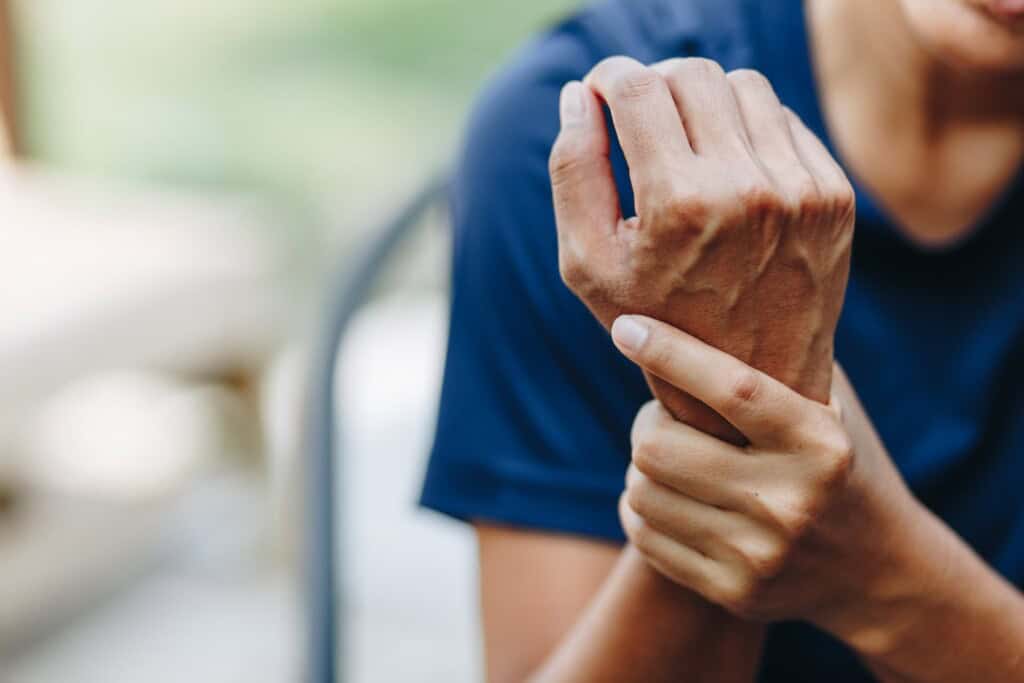
Before diving into the treatment, let’s get clear on what a sprain actually is. A sprain occurs when the ligaments – the tough bands of tissue that connect bones – are stretched or torn. This leads to pain, swelling, and difficulty moving the affected joint. The wrist and ankle are particularly vulnerable to sprains since they’re involved in everyday activities and physical exercise.
Now, here’s where I often see people go wrong: they think rest alone is enough. While rest is crucial, it’s not the complete picture. Gentle movement and treatments like bodywork therapy can significantly speed up the healing process by improving circulation, reducing stiffness, and helping maintain muscle tone.
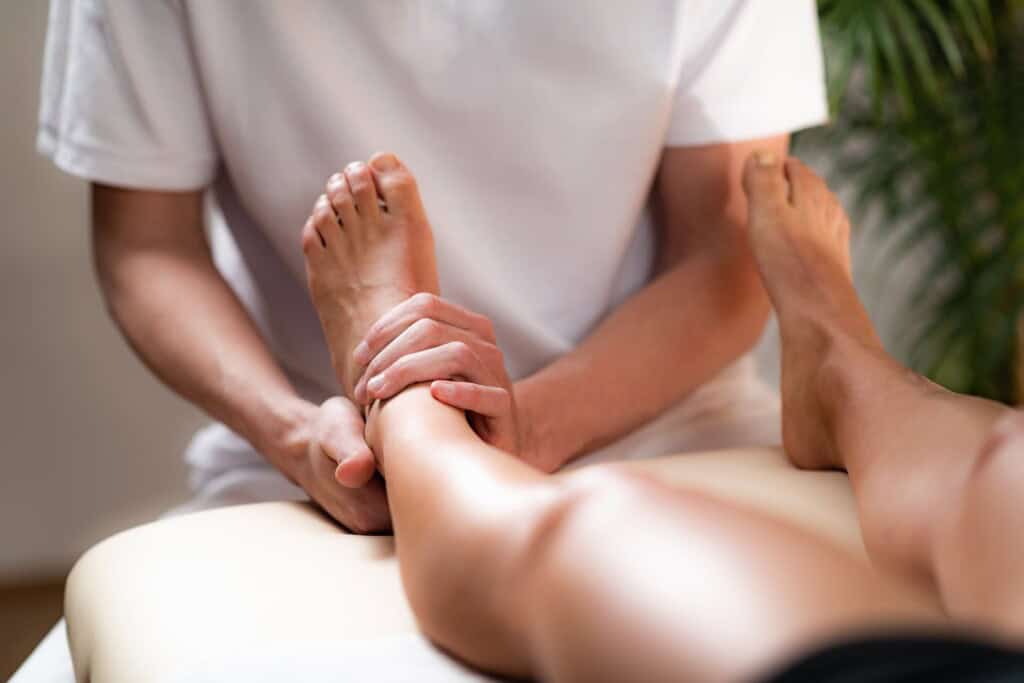
The first few days after a sprain can be really painful, and swelling is often a big issue. While ice and elevation offer quick relief in the first 24 hours, you’ll need more than that for full healing.
That’s where bodywork therapy comes in. It works deep beneath the skin, targeting layers of tissue that other treatments can’t reach.
Deep tissue massage is especially helpful – it eases tension in nearby muscles, which takes pressure off your injured ligaments and reduces pain.
I once had a client, a runner, who came to me with a badly sprained ankle. She was skeptical about trying anything beyond ice and compression. But after her first session, she noticed a big drop in swelling and pain. By her third session, she was moving much more easily, even before her doctor expected.
Stiffness is another common problem with sprained wrists and ankles, especially after the initial healing phase. This stiffness can lead to compensatory movements – like a limp that causes pain in your back, or a tight wrist that makes your shoulder ache.
Bodywork therapy can help improve flexibility by using techniques like myofascial release and trigger point therapy to relax tight muscles around the injury, making movement feel more natural.
Your body needs good blood flow to heal. Think of it like a delivery service – blood brings healing supplies and takes away the waste.
When you get hurt, the area swells up. This lets healing cells, including collagen, reach the injury. Collagen is crucial, making up over 80% of your fascia, the connective tissue surrounding everything in your body. Think of fascia as your body’s natural bandage, helping stabilize the area and protect it from further harm.
But here’s the thing – this protective tissue can get too tight, causing pain. Using bodywork techniques like myofascial release, trigger point therapy, and deep tissue massage increases blood flow to both sprained wrists and ankles, helping you recover faster. Applying gentle heat and bodywork to areas around these tight spots helps stretch and release the tissue, improving circulation and promoting faster recovery.
Quick tip: Skip the ice after the first 24-48 hours! It can make tissues tighter and slow down healing.
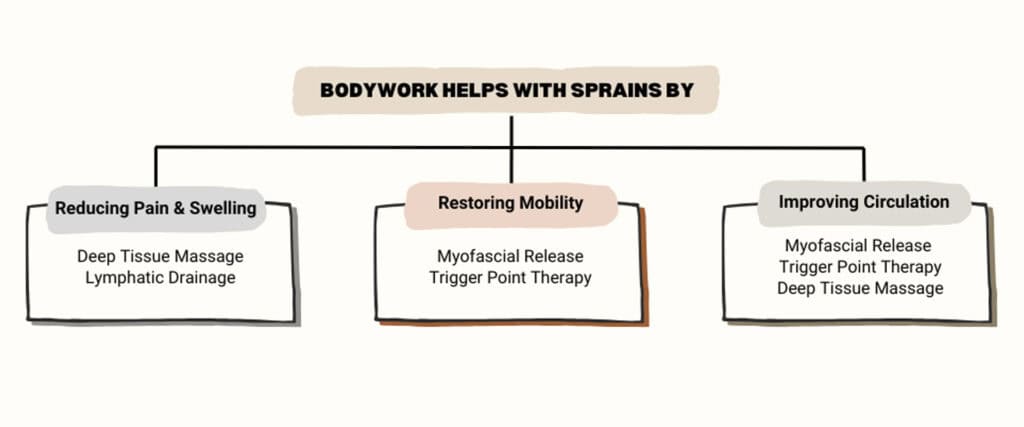
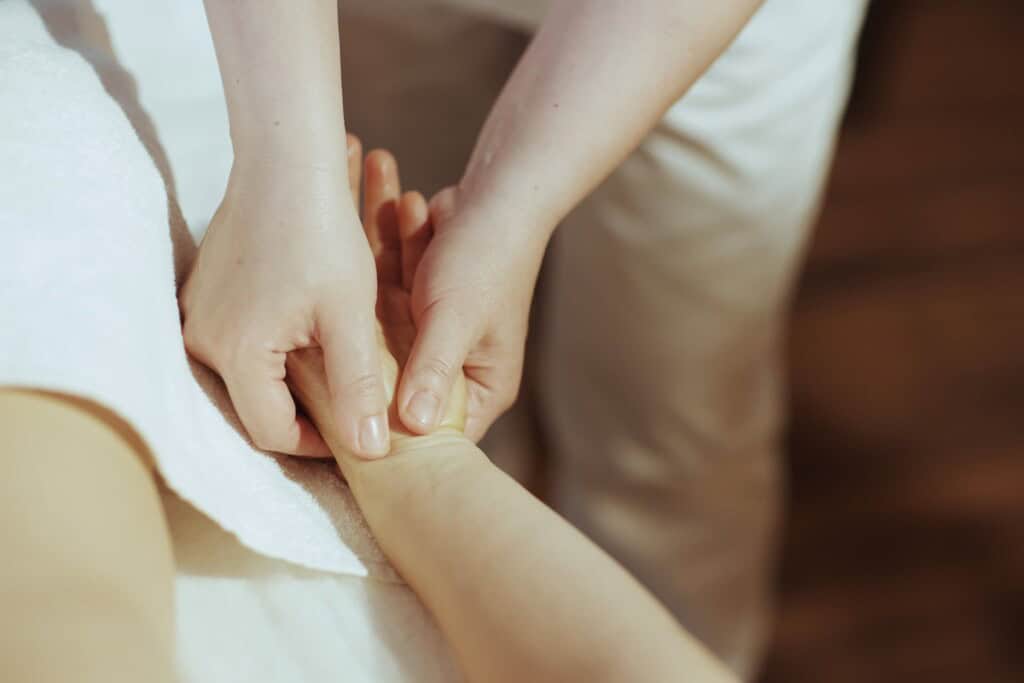
In the first week or two after a sprain, the focus is on reducing pain and swelling. I start with light massage and manual lymphatic drainage to help move fluid away from the injury and relieve pressure. For sprained ankles, we also work on keeping the muscles in the lower leg and foot active, but without putting strain on the ligaments.
One of my clients had a bad wrist sprain from a fall. She came in within the first week, and after the initial session, she was surprised at how much lighter her wrist felt. The swelling had reduced so much that she could finally bend it without wincing.
Once the swelling is under control and pain has subsided, I introduce more active release techniques to target any tightness in the muscles around the injury. For example, with sprained ankles, tight calves and hamstrings often develop due to compensating for the injury. Bodywork helps release this tension, restoring a more balanced movement pattern.
I also recommend heat during this phase. Heat softens the tissue, increases blood flow, and makes it easier to release adhesions that have built up. We also focus on gentle joint mobilization to increase the range of motion. It’s not about pushing through pain but rather gradually encouraging the body to regain its normal function.
As the injury heals, the focus shifts to strengthening and preventing future injuries. I use deep tissue massage to address any lingering knots and tension. For both wrists and ankles, keeping the surrounding muscles strong is crucial.
Here, we might combine bodywork with exercises that build strength and improve proprioception, your body’s ability to sense movement and position. This helps you regain confidence in your movements, which is key to avoiding a future sprain.
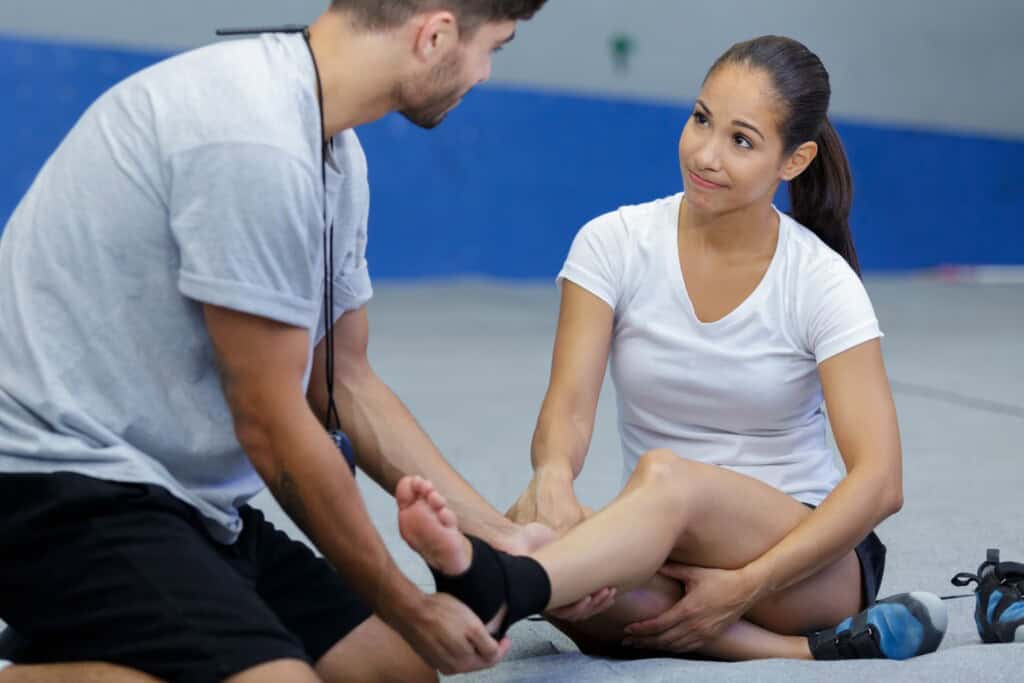
Here are a few tips to support your recovery between bodywork sessions:
People often make the mistake of assuming they’re fully healed as soon as the pain subsides. But here’s the thing: just because the pain is gone doesn’t mean tendons and the ligaments have fully recovered. Continuing with bodywork therapy beyond the point of pain relief helps ensure you regain full function and strength, reducing the risk of re-injury.
Another common mistake is jumping back into full activity too quickly. Trust me, I’ve seen more sprains turn into chronic issues because people felt “fine” and resumed their normal routine prematurely. Listen to your body. It takes time for tendons and ligaments to regain their strength.
The timeline for sprains can vary:
The timeline can vary based on factors like age, overall health, and how well the injury is managed from the start.
In my experience, clients who combine bodywork therapy with standard car, like rest, ice, compression, and elevation, often experience faster recovery times and less long-term stiffness.

Don’t let a sprain slow you down. Bodywork therapy can speed up your recovery, reduce pain, and help prevent future injuries. It’s not just about rushing recovery – it’s about supporting your body to heal smarter.
Ready to get back to your best? Contact Bodywork Masters today. Let our experts create a personalized plan to get you moving freely again. Your body will thank you!